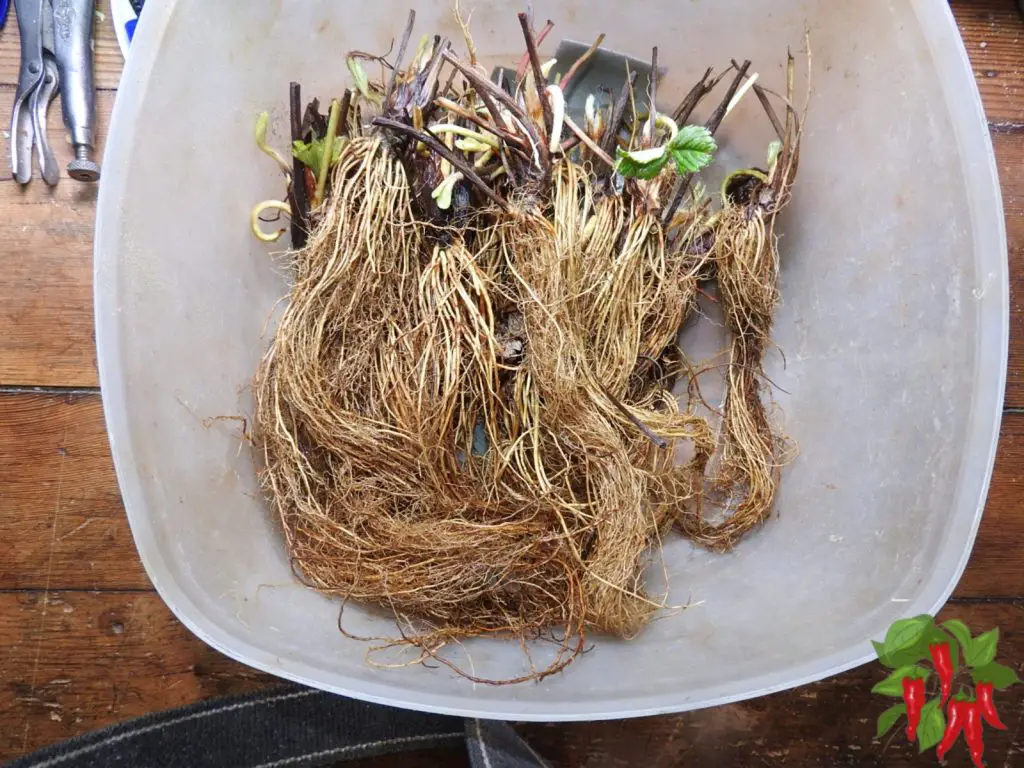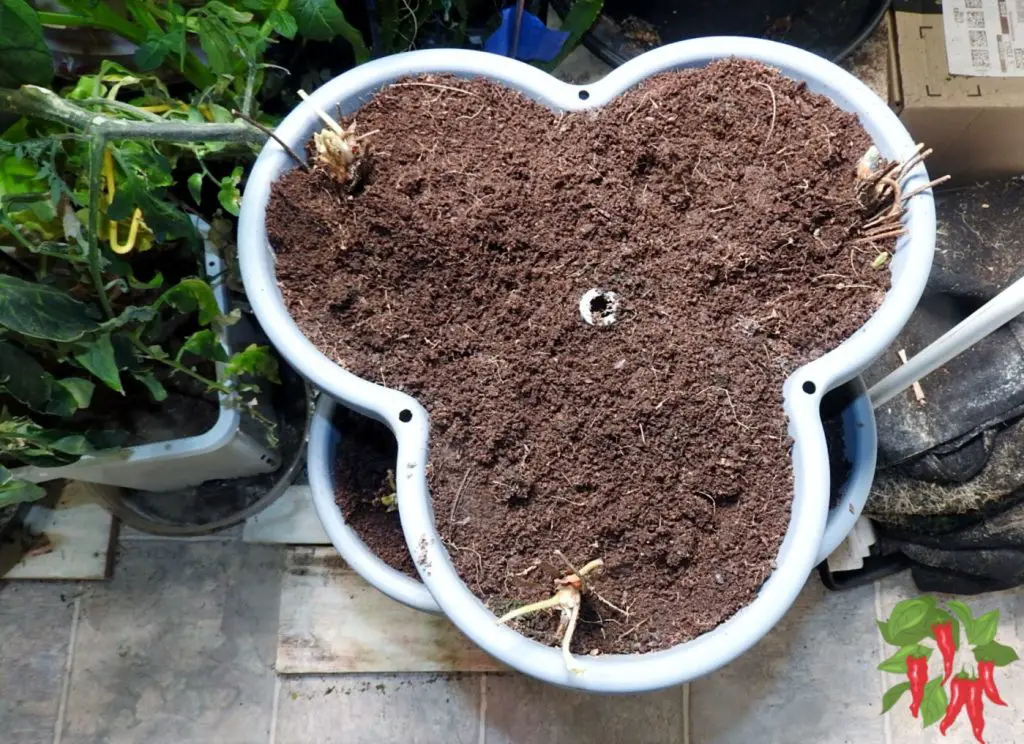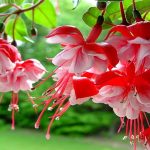This post may contain affiliate links. If you buy something from one of our links we may earn a commission. Thanks

Seascape Strawberries Key Takeaways:
- Seascape Strawberries are a day-neutral variety known for their large, sweet, and juicy berries.
- They can produce fruit throughout the growing season, making them a popular choice for gardeners.
- Seascape strawberries are relatively easy to grow, requiring full sun, well-drained soil, and consistent watering.
- Their flavor and versatility in recipes make them a favorite for fresh eating, jams, and baking.
Here is my Seascape Strawberry Review Video
My Seascape Strawberry Review
Welcome to our in-depth review of Seascape strawberries, a popular variety known for its sweet flavor and impressive yield.
In this post, we’ll take a closer look at what makes these berries a favorite among gardeners and fruit enthusiasts alike.
Brief Overview of Seascape Strawberries
Seascape strawberries are a day-neutral variety, meaning they can produce fruit throughout the growing season.
They are known for their large, firm berries with a bright red color and a sweet, juicy taste.
Seascape strawberries are often praised for their disease resistance and ability to thrive in a range of climates.
Personal Experience with the First Batch
My journey with Seascape Strawberries began with excitement but quickly turned into disappointment.
The first batch of plants I received was stuck in below-zero temperatures during shipping. Although they arrived in a seemingly unfrozen state, they struggled to thrive.
Only a few of the 25 plants showed signs of life, but even those were far from healthy. It was disheartening to watch them leaf out only to wither away.
So I reordered from a different supplier and these plants look great. Here is where I got them: https://amzn.to/3TxEOn9
Link to Where the Second Batch Was Purchased
Determined to give Seascape strawberries another chance, I ordered a second batch from a different supplier. This time, the plants looked promising right from the start.
If you’re interested in giving these strawberries a try, here’s where I found success: Amazon.
Size Range
When it comes to strawberries, size matters to many gardeners and consumers. In this section, we’ll explore the size range of Seascape strawberries and see how they stack up against other popular varieties.
Typical Size Range of Seascape Strawberries
Seascape strawberries are known for their generous size, with berries often reaching 1 to 2 inches in diameter.
This makes them larger than many other varieties, providing a satisfying bite and a visually appealing addition to any dish.
Their size, combined with their firmness, also makes them ideal for slicing and dicing in culinary preparations.
Comparison with Other Strawberry Varieties
When compared to other strawberry varieties, Seascape strawberries hold their own in terms of size.
For instance, June-bearing varieties like ‘Honeoye’ and ‘Earliglow’ tend to produce smaller berries, typically under 1 inch in diameter.
On the other hand, other day-neutral varieties like ‘Albion’ and ‘San Andreas’ produce similarly sized berries to Seascape, but they may not have the same consistent size throughout the season.
In conclusion, if you’re looking for large, juicy strawberries that maintain their size throughout the growing season, Seascape is a variety worth considering.
Their impressive size sets them apart from many other types, making them a favorite for both gardeners and food enthusiasts.
How to Grow Seascape Strawberries Indoors

Growing Seascape strawberries indoors can be a rewarding experience, especially when using a 5-tier stackable planter and coco coir as the growing medium. Here’s a step-by-step guide to help you get the best results.
Step-by-Step Guide on Growing Seascape Strawberries
- Choosing the Right Planter: Start with a 5-tier stackable planter, which is ideal for maximizing space and ensuring each plant receives adequate light and air circulation.
- Preparing the Coco Coir: Before planting, rinse the coco coir to remove any dust and soak it in water to ensure it’s fully hydrated. This will provide a clean and moist environment for the strawberry roots.
- Planting the Strawberries: Place the Seascape strawberry plants in the coco coir, ensuring the crown (the part where the stems and roots meet) is level with the surface. Space the plants about 8 inches apart to allow for growth.
- Watering: Keep the coco coir consistently moist but not waterlogged. Using a watering tray or a self-watering system can help maintain the right moisture level.
- Lighting: Since you’re growing indoors, provide at least 8-10 hours of bright, indirect light daily. Use grow lights if natural light is insufficient.
- Fertilizing: Feed your Seascape strawberries with a balanced, water-soluble fertilizer every two weeks during the growing season.
- Pollination: If you’re growing entirely indoors, you may need to hand-pollinate the flowers using a small brush or by gently shaking the plants to distribute pollen.
- Harvesting: Seascape strawberries are day-neutral, so they’ll produce fruit throughout the growing season. Pick the berries when they’re fully red and detach easily from the plant.
Tips for Optimal Growth
- Rotate your planter occasionally to ensure all sides receive equal light exposure.
- Monitor for pests and diseases, and address any issues promptly to keep your plants healthy.
- Prune any dead or yellowing leaves to encourage new growth and prevent disease.
- In a 5-tier setup, consider planting other herbs or small plants in the upper tiers to make the most of your vertical space.
By following these steps and tips, you can enjoy a bountiful harvest of Seascape strawberries right from the comfort of your home.
Read my updated Seascape Strawberry Hydroponic Grow
Growing Seascape Strawberries Outdoors
If you decide to grow Seascape strawberries outside, here are some additional steps and tips to ensure a successful harvest:
Choosing the Right Location: Select a spot in your garden that receives at least 6-8 hours of direct sunlight daily. Ensure the area has well-draining soil to prevent waterlogging.
Preparing the Soil: Amend the soil with compost or well-rotted manure to improve its fertility and structure. Seascape strawberries prefer slightly acidic to neutral soil with a pH between 5.5 and 7.
Planting: Space the strawberry plants about 18 inches apart in rows that are 2-3 feet apart. This allows for proper air circulation and easy access for maintenance and harvesting.
Mulching: Apply a layer of straw or pine needles around the plants to retain moisture, suppress weeds, and keep the berries clean.
Watering: Keep the soil consistently moist, especially during dry spells. Avoid overhead watering to prevent fungal diseases.
Protecting from Pests: Use netting or row covers to protect your strawberries from birds and other pests.
Winter Care: In colder climates, cover your strawberry plants with a layer of straw or mulch in late fall to protect them from freezing temperatures.
By following these additional steps for outdoor cultivation, you can enjoy the sweet rewards of Seascape strawberries in your own backyard.
Good For:
Seascape strawberries are not only delicious but also versatile in their culinary uses. Whether you’re enjoying them fresh or incorporating them into various dishes, here’s how you can make the most of these sweet berries.
Fresh Eating
There’s nothing quite like the taste of freshly picked Seascape strawberries. Their sweet, juicy flavor makes them a perfect snack on their own or as a refreshing addition to fruit salads, yogurt, or cereal.
Jams and Preserves
Seascape strawberries are ideal for making jams, preserves, and jellies. Their natural sweetness and firm texture hold up well during the cooking process, resulting in a spread that’s bursting with flavor.
Freezing
Seascape strawberries freeze well and can be a great way to preserve their fresh flavor for later use. Here are some tips for freezing them:
- Wash and Dry: Gently rinse the strawberries under cool water and pat them dry with a clean towel or paper towels.
- Hull: Remove the green leafy tops (hulls) of the strawberries using a paring knife or a strawberry huller.
- Pre-Freezing: Lay the strawberries in a single layer on a baking sheet lined with parchment paper. Make sure they are not touching each other. Place the baking sheet in the freezer for a few hours or until the strawberries are completely frozen. This step prevents them from sticking together in the freezer.
- Storage: Once frozen, transfer the strawberries to an airtight container or a resealable freezer bag. Remove as much air as possible from the bag to prevent freezer burn.
- Labeling: Label the container or bag with the date, so you can keep track of how long they have been in the freezer.
Frozen Seascape strawberries can be used in smoothies, and desserts, or thawed for use in recipes that call for fresh strawberries. They can last in the freezer for up to 6 months for the best quality, but they are still safe to eat beyond that time frame.
Baking
Incorporate Seascape strawberries into your baking for a touch of sweetness and a pop of color.
They’re excellent in muffins, scones, tarts, and pies. For a simple yet elegant dessert, try making a classic strawberry shortcake.
Smoothies and Drinks
Blend Seascape strawberries into smoothies for a nutritious and tasty treat. You can also use them to infuse water or make homemade strawberry lemonade.
Savory Dishes
Don’t limit Seascape strawberries to just sweet applications. They can add a unique twist to savory dishes as well. Try incorporating them into salads, salsas, or even as a topping for grilled meats.
In conclusion, Seascape strawberries are a versatile fruit that can enhance a wide variety of dishes.
Whether you’re enjoying them fresh, in jams, baked goods, smoothies, or savory recipes, they’re sure to add a delightful flavor to your culinary creations.
Where to Plant
Choosing the right location and conditions for planting Seascape strawberries is crucial for their growth and productivity.
Here are some factors to consider when deciding where to plant these delightful berries.
Ideal Locations and Conditions
- Sunlight: Seascape strawberries require at least 6-8 hours of direct sunlight daily. Choose a spot in your garden that gets plenty of sun throughout the day.
- Soil: These strawberries prefer well-drained, loamy soil with a pH between 5.5 and 7. Amend the soil with compost or well-rotted manure to improve fertility and drainage.
- Spacing: Plant Seascape strawberries about 18 inches apart in rows that are 2-3 feet apart. This allows for proper air circulation and easy access for maintenance.
- Watering: Ensure the planting site is in an area where you can easily water the plants. They need consistent moisture, especially during dry spells and when the berries are developing.
Considerations for Different Climates
- Cold Climates: In areas with harsh winters, choose a location that is protected from strong winds and frost. Consider using mulch or straw to cover the plants in the fall to protect them from freezing temperatures.
- Hot Climates: In regions with intense heat, opt for a spot that gets some afternoon shade to prevent the plants from overheating. Mulching can also help keep the soil cool and retain moisture.
- Humid Climates: In areas with high humidity, ensure there is good air circulation around the plants to reduce the risk of fungal diseases. Avoid overcrowding and consider using raised beds or containers for better drainage.
By selecting the right location and providing the ideal conditions, your Seascape strawberries will have the best chance to thrive and produce a bountiful harvest.
When to Pick
Harvesting Seascape strawberries at the right time is key to enjoying their best flavor and texture. Here are some tips on how to tell when they’re ripe and the optimal time of day for picking.
Indicators of Ripeness
- Color: Look for strawberries that are uniformly bright red. Seascape strawberries should be fully colored with no white or green spots near the stem. The deep, even color indicates they’re ready to be enjoyed.
- Size and Firmness: Ripe Seascape strawberries will be plump and firm to the touch. While the size can vary, they should have reached their full size and feel dense.
- Aroma: A sweet, fragrant aroma is a telltale sign of ripe strawberries. If you can smell the sweetness, it’s a good indication they’re ready for harvest.
Best Time of Day for Harvesting
- Early Morning: The best time to pick strawberries is in the early morning after the dew has evaporated but before the sun gets too hot. This is when the berries are cool and firm, making them less likely to get bruised during the picking process.
- Late Afternoon: If you can’t harvest in the morning, late afternoon is the next best option. Avoid picking during the hottest part of the day, as the heat can cause the berries to become soft and more susceptible to damage.
Harvesting your Seascape strawberries with care and at the right time will ensure you get the most out of your crop, both in terms of quantity and quality.
Gently twist the berries off the plant or use scissors to cut the stem close to the berry to avoid damaging the plant and the fruit.
Enjoy your freshly picked Seascape strawberries in your favorite dishes, or savor them on their own for a delicious treat.
Planting Instructions
Proper planting is crucial for the success of your Seascape strawberries. Follow these detailed instructions to give your plants the best start.
Soil Preparation
- Test the Soil: Begin by testing the soil pH. Seascape strawberries prefer a pH between 5.5 and 7. If needed, amend the soil with lime to raise the pH or sulfur to lower it.
- Improve the Soil: Work in compost or well-rotted manure to enhance soil fertility and structure. This will also help with drainage, which is vital for strawberry health.
- Create Raised Beds: If drainage is a concern or if you have heavy clay soil, consider creating raised beds. This will ensure that water doesn’t pool around the roots, preventing root rot.
Spacing
- Plant Spacing: Plant Seascape strawberry plants about 18 inches apart. This allows enough room for the plants to spread and for air to circulate, reducing the risk of disease.
- Row Spacing: Space rows about 2-3 feet apart. This makes it easier to access the plants for maintenance and harvesting.
- Depth: It is important to plant strawberries at the right depth. The crown should not be buried but be planted at soil level with the roots fully buried.
Watering Requirements
- Initial Watering: Water the plants thoroughly after planting to settle the soil around the roots.
- Consistent Moisture: Keep the soil consistently moist, especially during the first few weeks as the plants establish. Avoid overwatering, as strawberries do not like soggy conditions.
- Mulching: Apply a layer of straw or pine needles around the plants to help retain soil moisture and keep the fruit clean.
By following these planting instructions, you’ll create an ideal environment for your Seascape strawberries to thrive and produce a bountiful harvest.
Production Time
Understanding the production time of Seascape strawberries can help you plan your garden and anticipate when you’ll be enjoying your homegrown berries.
Here’s what you need to know about the time from planting to harvest and the factors that can influence it.
Expected Time from Planting to Harvest
- First Harvest: Seascape strawberries are day-neutral, meaning they can produce fruit throughout the growing season. You can expect your first harvest about 3 to 4 months after planting.
- Continuous Harvest: Unlike June-bearing varieties that have a single large harvest, Seascape strawberries will continue to produce fruit in waves from late spring through early fall, as long as conditions are favorable.
Factors That Can Affect Production Time
- Planting Time: Planting early in the spring can lead to an earlier harvest, while planting later may delay it. In warmer climates, planting in the fall can result in a spring harvest.
- Weather Conditions: Extreme temperatures, either too hot or too cold, can slow down fruit production. Optimal growing conditions include temperatures between 60°F and 80°F.
- Sunlight: Adequate sunlight is crucial for fruit development. Lack of sunlight can extend the time to harvest.
- Water and Nutrients: Consistent watering and proper fertilization are essential for healthy growth and timely fruiting. Drought stress or nutrient deficiencies can delay production.
- Pest and Disease Pressure: Pests and diseases can stress the plants and slow down fruit production. Regular monitoring and management are important to keep the plants healthy.
By understanding these factors and providing the right care, you can maximize your Seascape strawberry production and enjoy a steady supply of fresh berries throughout the growing season.
Shelf Life
Seascape strawberries are known for their delicious taste and juiciness, but like all strawberries, their shelf life is relatively short.
Understanding how to store them properly can help you enjoy their freshness for as long as possible.
Average Shelf Life of Seascape Strawberries
- At Room Temperature: Seascape strawberries can last for about 1 day at room temperature. It’s best to consume them the same day they are picked or purchased.
- In the Refrigerator: When stored properly in the refrigerator, Seascape strawberries can last for 3 to 7 days. The cooler temperature slows down the ripening process and helps retain their freshness.
Tips for Extending Shelf Life
- Do Not Wash Before Storing: Avoid washing the strawberries before storing them, as the moisture can promote mold growth. Wash them just before you’re ready to eat or use them.
- Store in the Fridge: Place the strawberries in a shallow container lined with paper towels to absorb any excess moisture. Cover the container with a lid or plastic wrap to keep them fresh.
- Keep Them Dry: Make sure the strawberries are dry before storing them. If you do wash them, pat them dry gently with a paper towel.
- Use a Humidity Drawer: If your refrigerator has a humidity-controlled drawer, store your strawberries there. Setting it to high humidity helps prevent the berries from drying out.
- Check Regularly: Inspect the strawberries daily and remove any that are spoiled or moldy to prevent the spread to other berries.
- Freezing: For longer storage, you can freeze Seascape strawberries. Wash, hull, and pat them dry, then place them on a baking sheet in a single layer to freeze. Once frozen, transfer them to a freezer-safe bag or container.
By following these tips, you can extend the shelf life of your Seascape strawberries and enjoy their fresh, sweet flavor for a longer period.
Seascape Strawberry FAQs
In this section, we’ll address some common questions about Seascape strawberries to help you better understand this popular variety.
Q: Do Seascape strawberries come back every year?
A: Yes, Seascape strawberries are perennial plants, meaning they can come back year after year. However, their productivity may decrease after 3-4 years, so you may want to replace them with new plants.
Q: Are Seascape strawberries day-neutral or everbearing?
A: Seascape strawberries are day-neutral, meaning they can produce fruit throughout the growing season regardless of the length of daylight. This is different from everbearing strawberries, which typically have two main harvests.
Q: What do Seascape strawberries taste like?
A: Seascape strawberries are known for their sweet, juicy flavor with a balanced level of acidity. They have a rich, aromatic taste that makes them a favorite for fresh eating and desserts.
Q: Do Seascape strawberries produce runners?
A: Yes, like most strawberry varieties, Seascape strawberries produce runners. Runners are horizontal stems that grow out from the main plant and can root themselves to form new plants.
Q: Do Seascape strawberries spread?
A: Seascape strawberries can spread through their runners. If left unchecked, the runners can root and establish new plants, leading to a spread of the strawberry patch.
Q: Should I remove strawberry runners?
A: Removing runners can help direct the plant’s energy into fruit production rather than producing new plants. If you want to control the spread of your strawberry patch or increase fruit yield, consider trimming the runners.
Q: How tall do Seascape strawberries get?
A: Seascape strawberries typically grow to be about 8-12 inches tall. The height can vary depending on growing conditions and plant care.
Q: Do Seascape strawberries need full sun?
A: Yes, Seascape strawberries require full sun, meaning at least 6-8 hours of direct sunlight per day, to produce the best fruit.
Q: Are Seascape strawberries heat tolerant?
A: Seascape strawberries have moderate heat tolerance. They can perform well in warmer climates, but excessive heat can stress the plants and reduce fruit quality. Providing some afternoon shade in hot climates can help protect the plants.
Seascape Strawberry Review Conclusion
As we wrap up our review of Seascape strawberries, let’s take a moment to reflect on what makes this variety a standout choice for gardeners and strawberry enthusiasts.
Recap of the Key Points about Seascape Strawberries
- Seascape strawberries are a day-neutral variety known for their large, sweet, and juicy berries.
- They offer the advantage of continuous fruit production throughout the growing season, making them a popular choice for both home gardeners and commercial growers.
- With proper care, including adequate sunlight, consistent watering, and regular feeding, Seascape strawberries can thrive and produce bountiful harvests.
Personal Recommendation Based on Experience
Based on my experience, Seascape strawberries are a reliable and delicious choice for anyone looking to grow strawberries.
Despite the initial setback with my first batch, the second batch of plants proved to be healthy and productive.
The large, flavorful berries are perfect for fresh eating, baking, and preserving. I highly recommend giving Seascape strawberries a try in your garden.
You can buy plants here on Amazon
You might also like Indoor Apartment Gardening: 15 Point Comprehensive Guide
Resources
Here are some references for Seascape strawberries from cooperative extension websites:
- University of Minnesota Extension: This source provides information on day-neutral strawberries, which includes Seascape. It discusses their longer harvest season, higher yields, and the benefits of growing them under protected culture like low tunnels. The article also mentions that most day-neutral strawberry varieties, including Seascape, grow best between 45°F and 85°F, and that white on black plastic mulch performs well for growing these strawberries (University of Minnesota Extension).
- Purdue University: This article highlights research conducted at Purdue University, which found that Seascape strawberries could be a good crop for space missions due to their low maintenance and energy requirements. Seascape strawberries are day-neutral and have been tested under different photoperiods, showing consistent yield with larger berries under shorter daylight conditions. The research suggests that Seascape strawberries could be grown with less light, reducing energy requirements for space missions (Purdue University).
- Utah State University Extension: This source mentions that Seascape is a day-neutral strawberry variety that has proven to be productive in a wide range of climates. The large, flavorful fruit is good for fresh consumption, and the plants are resistant to Verticillium wilt. It also provides general information on growing strawberries, including planting, fertilizing, and irrigation (Utah State University Extension).
These references provide valuable information on growing Seascape strawberries and their suitability for different environments, including space missions.
Visit my Amazon Influencer Page for videos and gardening products Grow Your Own Garden








